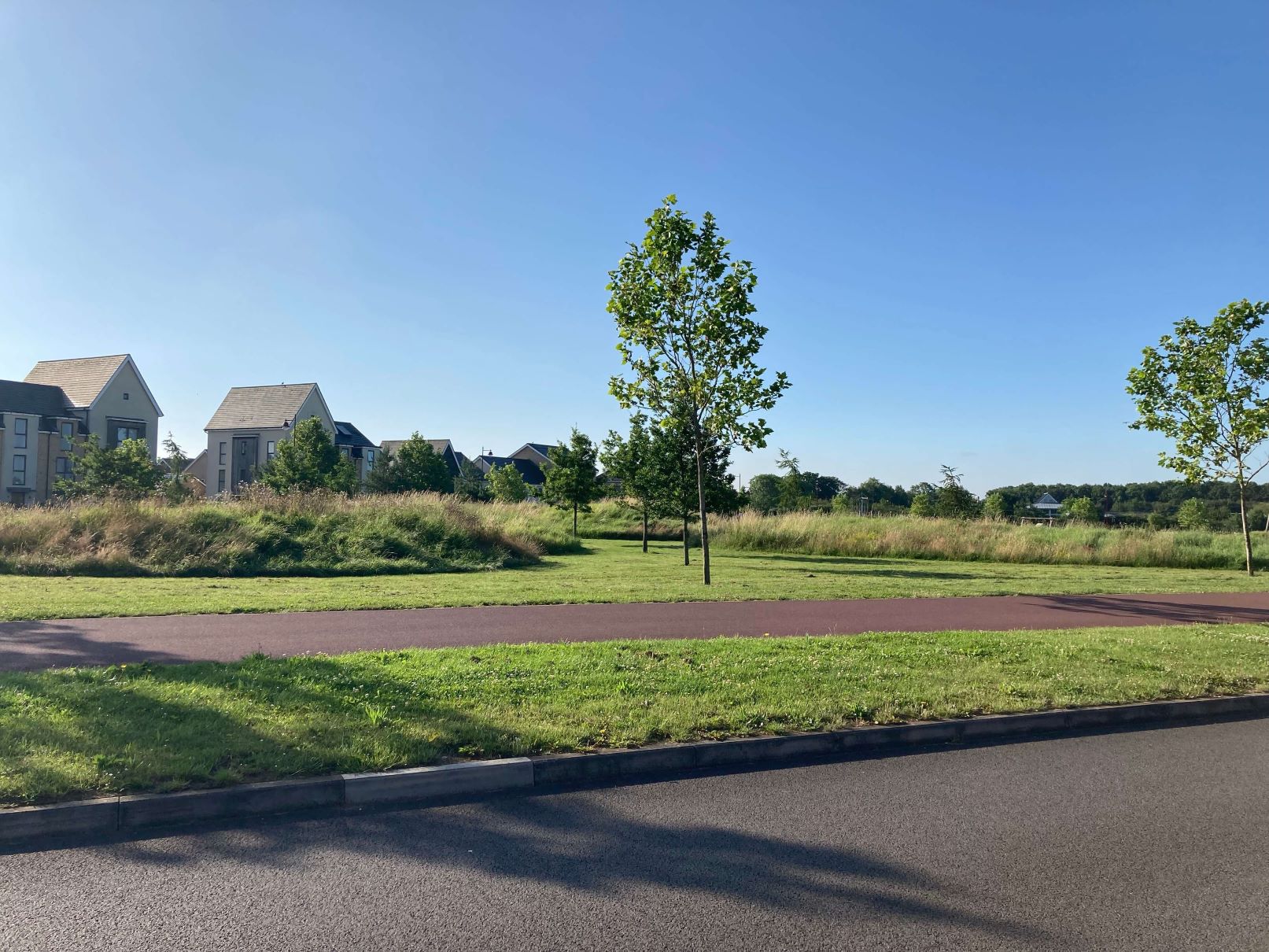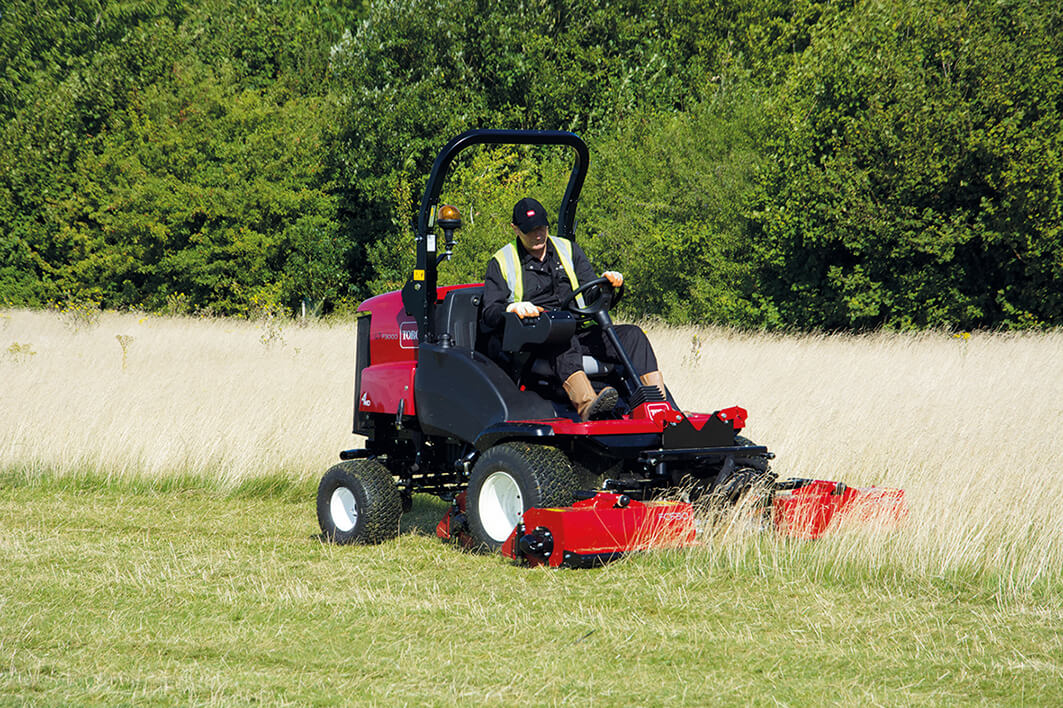How to sustainably manage roadside verges
All over the country, councils, local authorities, and contractors are letting well-manicured grass grow out to create wildflower areas.
There have been many reasons for this: a growing focus on climate change, the establishment of council carbon management programmes, the widespread decline in pollinating insects in the UK, and a growing public acceptance for alternatives to traditional council green space and roadside verge management.
But looking after urban verges and green spaces can be challenging; implementing changes to ‘rewild’ areas can cause complaints that grass is unkempt. However, with this guide, we’ll explain how to create flower-rich verges that look well-maintained and are beneficial to biodiversity.

What are rewilded verges?
In this case, rewilding is the creation of wildflower meadows using low fertility soils to reestablish natural processes, repair ecosystems, and boost biodiversity. Rewilding verges has the added benefits of reducing carbon emissions, saving money, and protecting nature, as well as looking attractive.
What are the benefits of rewilding verges?
Verges account for about 1,000 sq miles (2,579 sq km) of the UK’s land which has, up until recently, been maintained as short, frequently mown grassland.
An overlooked but vital habitat, verges can be home to more than 700 species of wildflowers – and as 97 percent of Britain’s traditional meadows have vanished since the 1930s, they’re increasingly important for flowers, butterfly conservation, and other wildlife – if managed correctly.
Therefore councils, local authorities, and contractors have the power to support billions of flowers in the UK with a mowing regime that helps wildflowers thrive. Changing the way these areas are maintained by reducing mowing not only sustains verge habitats, but also provides flowers for pollinators and allows plants to set seed.
Why are roadside verges important?
Defined as the strip of land between the roadside and the fence, roadside verges are important ‘wildlife corridors’ for plants, flowers, and invertebrates across an increasingly fragmented countryside.
Better road verge management offers opportunities to improve verges as multifunctional green spaces in urban areas and densely populated regions, particularly where land scarcity is an issue.
The Local Government Association says councils must keep verges short to ensure motorists have a good line of sight, allow pedestrians to walk safely alongside busy roads, prevent the spread of weeds and invasive species into private gardens, and to maintain a certain appearance.
What are the benefits of framing verges?
Cutting narrow strips around wilder verges is a simple but effective way to give the perception of tidiness and combat the idea wildflower-rich verges are untidy and neglected, offsetting potential negative feedback.
Framing verges involves cutting a one-mower-width, or at most 1.4m, along the front edge of the verge to frame the longer grass and wildflower area behind it. This lets people know the area is intentional and hasn’t just been left.
Managing road verges in this way has two other important benefits:
- Keeping roads safe. The area of shorter grass at the front of the verge ensures good visibility and safety at junctions, as well as keeping footpaths through green spaces open and accessible.
- Structural diversity. The two different heights of vegetation – short in the front and long at the back – are great not only for plant diversity (some species are naturally low growing, others tall) but supports lots of insect life, too.

What is the best type of mower for framing verges?
Framing verges requires regular maintenance every two to four weeks. Local councils, authorities, and contractors typically use triple cylinder mowers or rotary mowers for keeping the grass shorter as they provide the best cut and after-cut appearance.
However, because they can only cope with grass that’s cut quite frequently, triple cylinder mowers and rotary mowers aren’t suitable for rewilded verges. Instead, a flail mower is best because they can cope with longer grass, less frequent cuts, and are also cheaper to maintain.
What are the benefits of using a flail mower for road verge management?
A triple flail mower such as the Toro LT-F3000 mimics the size, cutting width, and manoeuvrability of a traditional triple cylinder mower. The flail cutting heads are able to cut long and short grass, wet or dry, and leave a much better after-cut appearance than a rotary mower.
Customers can be a little nervous about investing in the unknown, such as a flail instead of a traditional cylinder or rotary mower, which goes against a purchasing decision they’ve been making for years. But perceptions are starting to change and councils, local authorities, and contractors are seeing flail mowers as a viable solution, especially for rewilded verges.
The Toro LT-F3000 has the added benefit of an interchangeable cylinder attachment offering versatility and the capability for the front-facing triple mower to cut two ways if and when needed (tougher cutting with the flail or finer with the cylinder).
Having a mower that can, with the attachment of a cylinder unit, tackle longer grass, and then multi-task by leaving a premium finish on playing fields and sports grounds, is a really cost-effective solution.
How to encourage wildflowers and maintain rewilded verges
The vast majority of amenity grassland and roadside verges have significant potential. The key to this lies in ‘cut and collect’, whereby highways authorities remove grass cuttings from the site.
The most effective way to encourage wildflowers is to reduce soil fertility. Collecting the thatch of decaying grass removes nutrients and reduces the fertility of the soil and, since wildflowers thrive in poor soil, this means wildflowers will thrive and less vigorous grass will dominate.
If there is a significant reduction in ground nutrients over successive seasons, the result is shorter grass and greater species diversity. Over time, it should be possible to reduce the cutting regime from 10 cuts annually to two or three cut-and-collect mowings each season.
Grass remains relatively short, as growth is suppressed and, as a result, there will be more wildflowers. Where wildflowers are well-established, one annual cut in the autumn when seeds have been set will be sufficient.

Working towards more sustainable management of roadside verges
Framing wild verges is a cost-effective, practical solution in the journey to road verges being designed and managed to support an array of wildlife – just don’t forget to communicate any changes to verge management.
Flower-rich verges are increasingly popular with local communities and are a great way of encouraging wildlife into the heart of the built environment and verge signage, like framing verges, makes clear that wilder verges are intentional and can engage local communities, helping to address negative perceptions of wilder verges.
Reesink is available to help you decide which machines will work best for your specific requirements and budget.